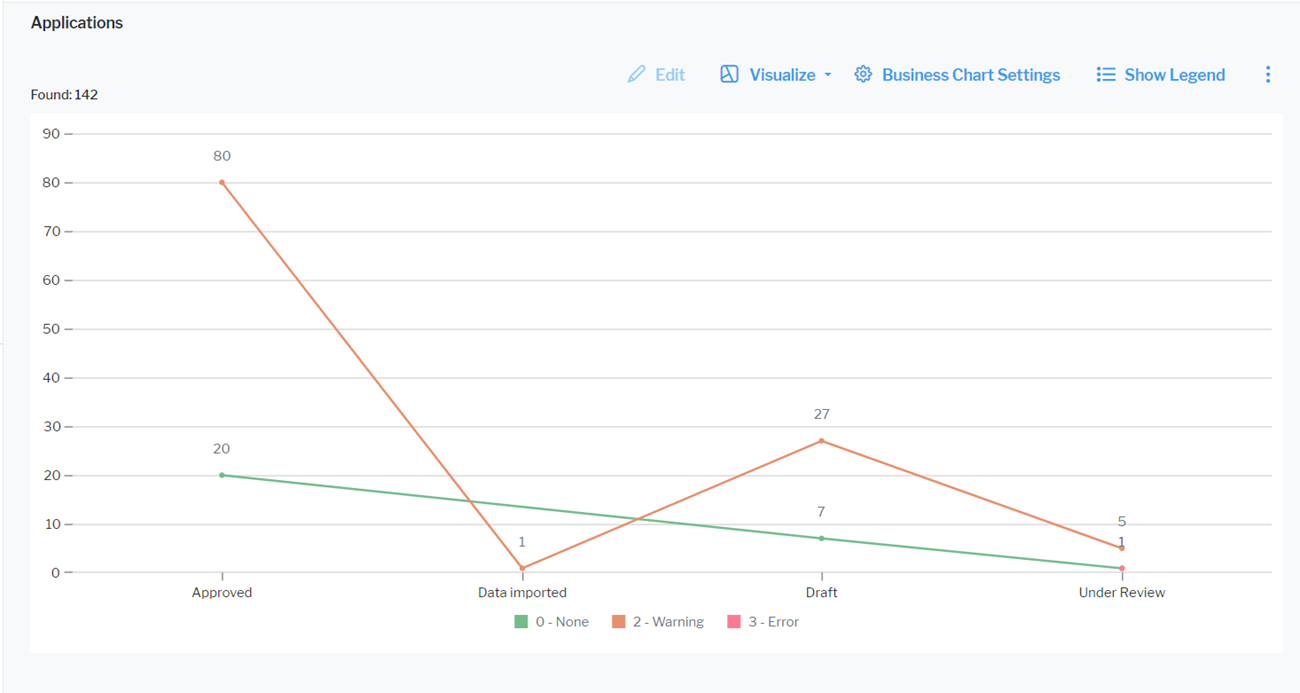Set up the line chart

Click Visualize > Business Charts > Line Chart. Click Business Chart Settings to set up the line chart.
The assets visible in the visualization are based on the definition made in the data table. To add or remove assets, click Visualize > Data Table. Click the Structure button to change the content .Click to learn more about how to specify the data you want to see.
Define the data to display in the Data Visualization tab.
- X-Value: Select one or more attributes to show as the value on the X-axis.
- Y-Value: Select either <RecordCount> to show the total number of records or a different number value to display on the Y-axis.
- Series: Select one or more attributes to specify a data series to further distinguish the results based on a selected attribute. The series is represented by different lines in the line chart.
You can optionally change the layout in the Layout tab.
- Chart Title: Define a title for display on top of the chart.
- X-Axis Title: Define a title for display beneath the X-axis.
- Y-Axis Title: Define a title to display along the Y-axis.
- Hide Value Labels: Set a checkmark to hide value labels for the points on the lines. Value labels provide information about the number the point represents.
- Show Legend: Clear the checkmark to hide the legend displayed by default for the chart.
- Background Color: Select a color to change the color of the chart background.
- Number Prefix: Enter a prefix to display before the numerical value. For example, enter a currency symbol to add it in front of a monetary value in the value labels. There will be no white space between the prefix and the number.
- Y-Minimum Value: By default, the range of the Y-axis is adjusted to the maximum and minimum Y-values in the chart. Set this attribute to enforce a start point for the Y-axis. For example, define the same Y-axis range for multiple charts to make it easier to compare the values in the charts. If an Y-value in the chart is smaller than the selected minimum value, the minimum value setting will be ignored to ensure that all data is displayed.
- Y-Maximum Value: By default, the range of the Y-axis is adjusted to the maximum and minimum Y-values in the chart. Set this attribute to enforce an end point for the Y-axis. For example, define the same Y-axis range for multiple charts to make it easier to compare the values in the charts. If an Y-value in the chart is higher than the selected maximum value, the maximum value setting will be ignored to ensure that all data is displayed.